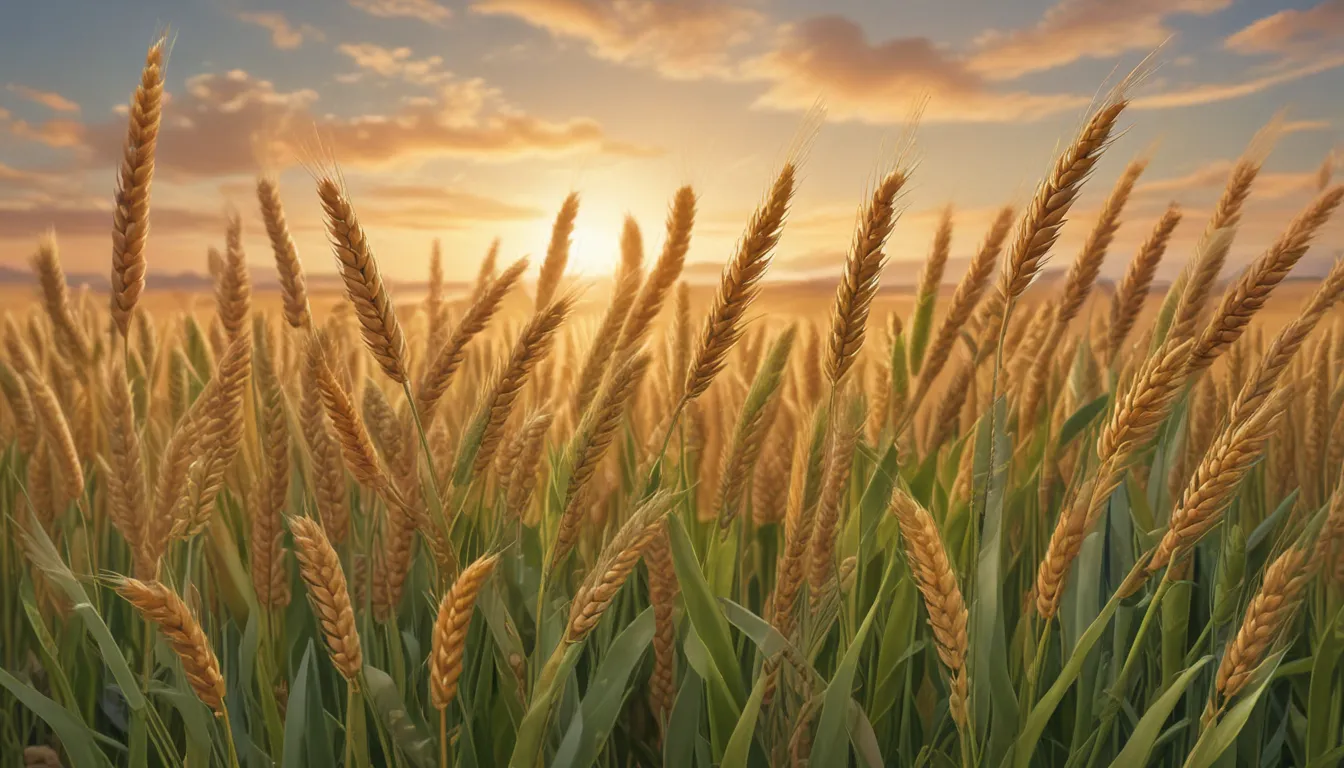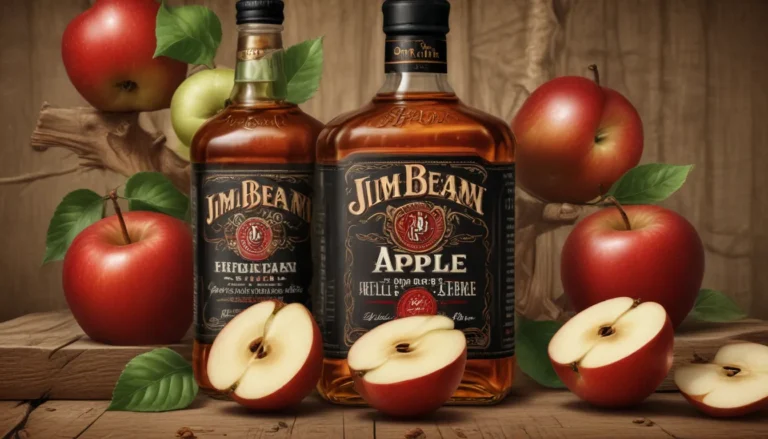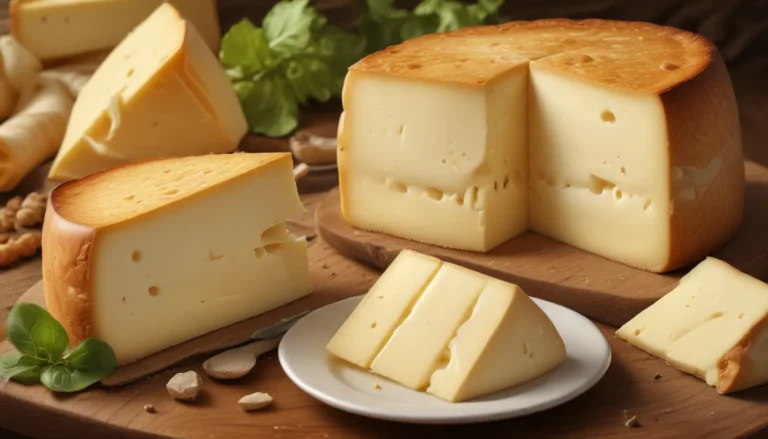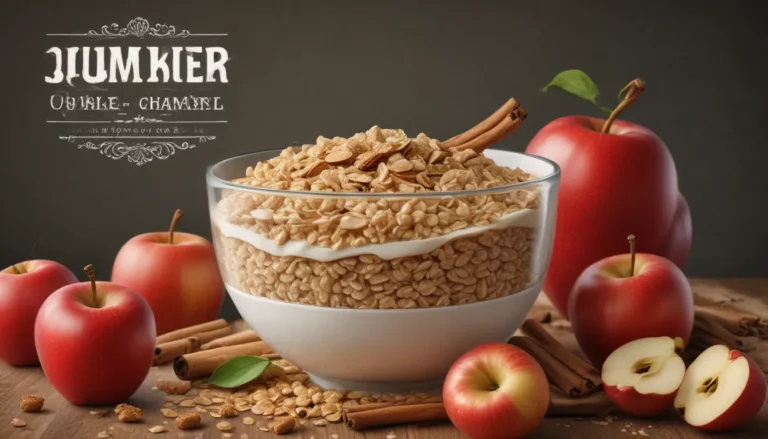The pictures in our articles might not always show exactly what the text is talking about. We use these images to make the article more interesting and eye-catching. They are there to add to the text, but not to replace it or show every detail.
Do you have a curiosity for unique and intriguing grains? If so, triticale is a hybrid grain that combines the qualities of wheat and rye to offer a multitude of benefits to both consumers and farmers. Whether you are a food enthusiast looking to expand your culinary horizons or a farmer seeking an innovative and sustainable crop option, triticale is definitely worth exploring. In this article, we will delve into 12 fascinating facts about triticale that will not only deepen your understanding of this grain but also spark your interest in its diverse applications. From its origins to its nutritional value and even its impact on the environment, triticale proves to be an abundant source of information and possibilities. So, let's embark on this triticale journey together and uncover the captivating world of this extraordinary grain!
Key Things to Remember
- Triticale is a versatile super grain with higher protein and fiber than wheat, making it ideal for vegetarian diets and promoting healthy digestion and weight management.
- It is a tough and resilient crop that can thrive in harsh climates, provide essential minerals, and even be used for biofuel production, making it a sustainable choice for both agriculture and the environment.
The Hybrid Wonder: Triticale
Triticale is a remarkable hybrid grain that is created by crossbreeding wheat with rye. By combining the desirable qualities of wheat, such as high grain yield, with the hardiness and disease resistance of rye, triticale emerges as a versatile and resilient crop with a unique genetic makeup.
Nutritional Powerhouse
Compared to wheat, triticale boasts a higher protein content, making it a valuable source of plant-based protein for vegetarians and vegans. Additionally, triticale is rich in dietary fiber, which aids digestion, promotes gut health, and assists with weight management by promoting satiety.
Versatility in the Kitchen
Whether you are baking bread, whipping up a hearty porridge, or concocting nutritious salads, triticale can be incorporated into a variety of culinary creations. Its distinctive flavor profile adds depth and complexity to dishes, making it a versatile ingredient in the kitchen.
Resilience in the Face of Adversity
Triticale is known for its resilience to harsh climates and challenging growing conditions. Its hardiness allows it to thrive in environments where other grains struggle, withstanding extreme temperatures, droughts, and certain diseases to provide a reliable crop for farmers.
Sustainable Agriculture
Due to its ability to grow in diverse conditions and its resistance to disease, triticale requires fewer pesticides and fertilizers compared to other grains, making it an environmentally friendly choice for agriculture. Its sustainability makes it a promising crop for future farming practices.
Mineral-Rich Benefits
Triticale is a good source of essential minerals such as iron, zinc, and magnesium, which play crucial roles in various bodily functions like immune system support and cell maintenance. By incorporating triticale into your diet, you can benefit from these essential minerals.
Livestock Feed Option
With its high nutritional value, triticale serves as an excellent feed option for livestock, including cattle, horses, and poultry. It provides a balanced diet for animals, promoting their growth and overall health.
Gluten-Friendly Alternative
For individuals sensitive to gluten or those with celiac disease, triticale offers a lower gluten content compared to wheat, making it a more tolerable option for individuals with gluten-related disorders.
Culinary Applications
Triticale grains can be milled into flour, which can be used for baking various goods such as bread, pastries, and pasta. Its slightly nutty flavor adds a unique twist to baked goods, enhancing their taste and texture.
Soil Health and Erosion Prevention
With its rapid growth and extensive root system, triticale is often utilized as a cover crop to prevent soil erosion and improve soil quality. By retaining moisture and enriching the soil with organic matter, triticale contributes to healthier soil conditions.
Biofuel Potential
The production of biofuels from triticale can help reduce our dependency on fossil fuels. With its high starch and sugar content, triticale serves as an ideal crop for biofuel production, paving the way for a greener and more sustainable future.
Concluding Thoughts on Triticale
Triticale is truly a remarkable grain that offers a host of benefits and possibilities. From its hybrid origins to its culinary versatility and positive environmental impact, triticale deserves recognition in the realms of agriculture and nutrition. Whether you are a farmer seeking a hardy and high-yielding crop, a chef exploring new ingredients, or a health-conscious individual looking to add wholesome grains to your meals, triticale is a grain worth considering. Its resilience, adaptability, and nutritional profile make it a valuable addition to the world of food.
FAQs: Your Questions Answered
- What is triticale?
- Triticale is a hybrid grain created by crossbreeding wheat and rye, resulting in a unique and versatile grain with desirable traits from both parent grains.
- What are the nutritional benefits of triticale?
- Triticale is rich in dietary fiber, protein, essential minerals like iron and magnesium, B-vitamins, and antioxidants, making it a nutritious addition to your diet.
- How is triticale used in cooking?
- Triticale can be used in various culinary applications, including baking bread, making pasta, and enhancing the flavor and texture of salads and soups, offering endless possibilities in the kitchen.
- Is triticale gluten-free?
- No, triticale contains gluten due to its wheat heritage, so individuals with gluten sensitivities or celiac disease should avoid consuming triticale products.
- Is triticale a sustainable crop?
- Yes, triticale is known for its resilience, adaptability to diverse climates and soils, and lower requirements for pesticides and fertilizers, making it a sustainable choice for farmers.
- Can triticale be used as animal feed?
- Yes, triticale is a popular choice for livestock feed due to its high nutritional value, benefiting animals like cattle, swine, and poultry.
- Where is triticale commonly grown?
- Triticale is cultivated worldwide, with significant production in countries such as Canada, Poland, Germany, and the United States, showcasing its adaptability to various regions.
- Can triticale be grown organically?
- Yes, triticale can be grown using organic farming practices, making it a viable option for farmers interested in organic grain production.
- What are the advantages of growing triticale?
- Triticale offers farmers high yield potential, disease resistance, and soil improvement through its deep root system, providing multiple benefits for agricultural practices.
- Can triticale be stored long-term?
- Yes, triticale has good storage qualities and can be stored for extended periods when properly dried and stored in a cool, dry environment.
Triticale's intriguing history and nutritional benefits make it a grain worth exploring. If you are interested in learning more about grains and crops, consider delving into the world of wheat, alfalfa for livestock feed, or rye for its unique flavor and health advantages. Happy exploring the diverse world of agriculture and nutrition!






